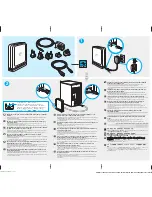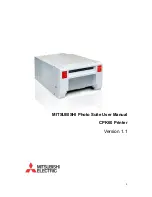
Saving Configuration Changes
ExtremeWare XOS 10.1 Concepts Guide
229
Table 38 describes the image version fields.
Software Signatures
Each ExtremeWare XOS image contains a unique signature. The BootROM checks for signature
compatibility and denies an incompatible software upgrade. In addition, the software checks both the
installed BootROM and software and also denies an incompatible upgrade.
Rebooting the Switch
To reboot the switch immediately, use the following command:
reboot {time <date> <time> | cancel} {slot <slot number> | msm <slotid>}
where
date
is the date and
time
is the time (using a 24-hour clock format) when the switch will be
rebooted. The values use the following format:
mm/dd/yyyy hh:mm:ss
If you do not specify a reboot time, the reboot occurs immediately following the command, and any
previously schedule reboots are cancelled. To cancel a previously scheduled reboot, use the
cancel
option.
Saving Configuration Changes
The configuration is the customized set of parameters that you have selected to run on the switch. As
you make configuration changes, the new settings are stored in run-time memory. Settings that are
stored in run-time memory are not retained by the switch when the switch is rebooted. To retain the
settings, and have them loaded when you reboot the switch, you must save the configuration to
nonvolatile storage.
The switch can store multiple user-defined configuration files, each with its own file name. By default,
the switch has two pre-named configurations: a primary and a secondary configuration. When you save
configuration changes, you can select to which configuration you want the changes saved or you can
save the changes to a new configuration file. If you do not specify a file name, the changes are saved to
the configuration file currently in use. Or if you have never saved any configurations, you are asked to
save your changes to the primary configuration.
Table 38: Image version fields
Field
Description
major
Specifies the ExtremeWare XOS Major version number.
minor
Specifies the ExtremeWare XOS Minor version number.
patch
Identifies a specific patch release.
build
Specifies the ExtremeWare XOS build number. This value is reset to zero for each new
Major and Minor release.
Summary of Contents for ExtremeWare XOS 10.1
Page 12: ...12 ExtremeWare XOS 10 1 Concepts Guide Contents...
Page 15: ...Part 1 Using ExtremeWare XOS...
Page 16: ......
Page 20: ...20 ExtremeWare XOS 10 1 Concepts Guide ExtremeWare XOS Overview...
Page 32: ...32 ExtremeWare XOS 10 1 Concepts Guide Accessing the Switch...
Page 74: ...74 ExtremeWare XOS 10 1 Concepts Guide Virtual LANs VLANs...
Page 80: ...80 ExtremeWare XOS 10 1 Concepts Guide Forwarding Database FDB...
Page 112: ...112 ExtremeWare XOS 10 1 Concepts Guide Status Monitoring and Statistics...
Page 133: ...Part 2 Using Switching and Routing Protocols...
Page 134: ......
Page 174: ...174 ExtremeWare XOS 10 1 Concepts Guide Virtual Router Redundancy Protocol...
Page 184: ...184 ExtremeWare XOS 10 1 Concepts Guide IP Unicast Routing...
Page 202: ...202 ExtremeWare XOS 10 1 Concepts Guide Interior Gateway Protocols...
Page 216: ...216 ExtremeWare XOS 10 1 Concepts Guide Exterior Gateway Routing Protocols...
Page 224: ...224 ExtremeWare XOS 10 1 Concepts Guide IP Multicast Routing...
Page 225: ...Part 3 Appendixes...
Page 226: ......
Page 234: ...234 ExtremeWare XOS 10 1 Concepts Guide Software Upgrade and Boot Options...
Page 242: ...242 ExtremeWare XOS 10 1 Concepts Guide Troubleshooting...
Page 256: ...4 ExtremeWare XOS 10 1 Concepts Guide Index of Commands...
















































